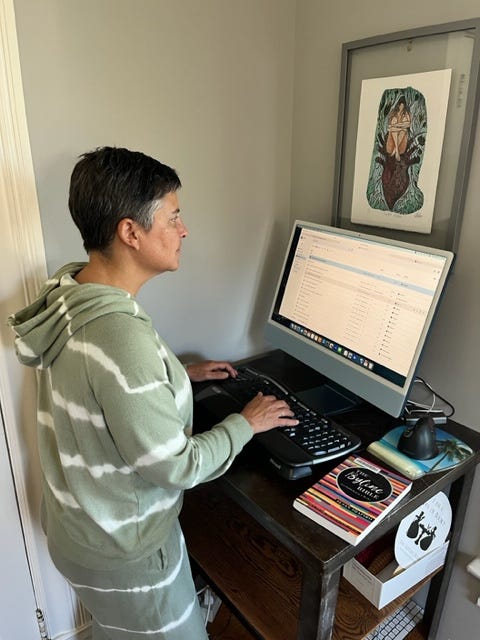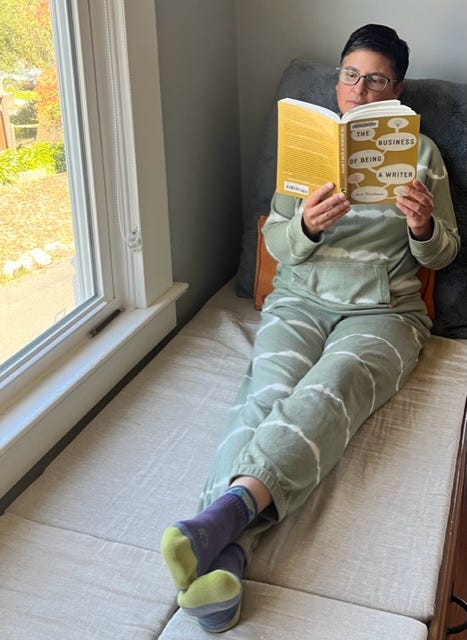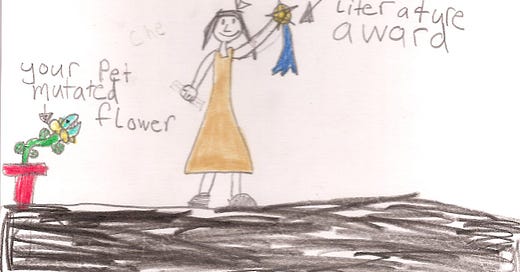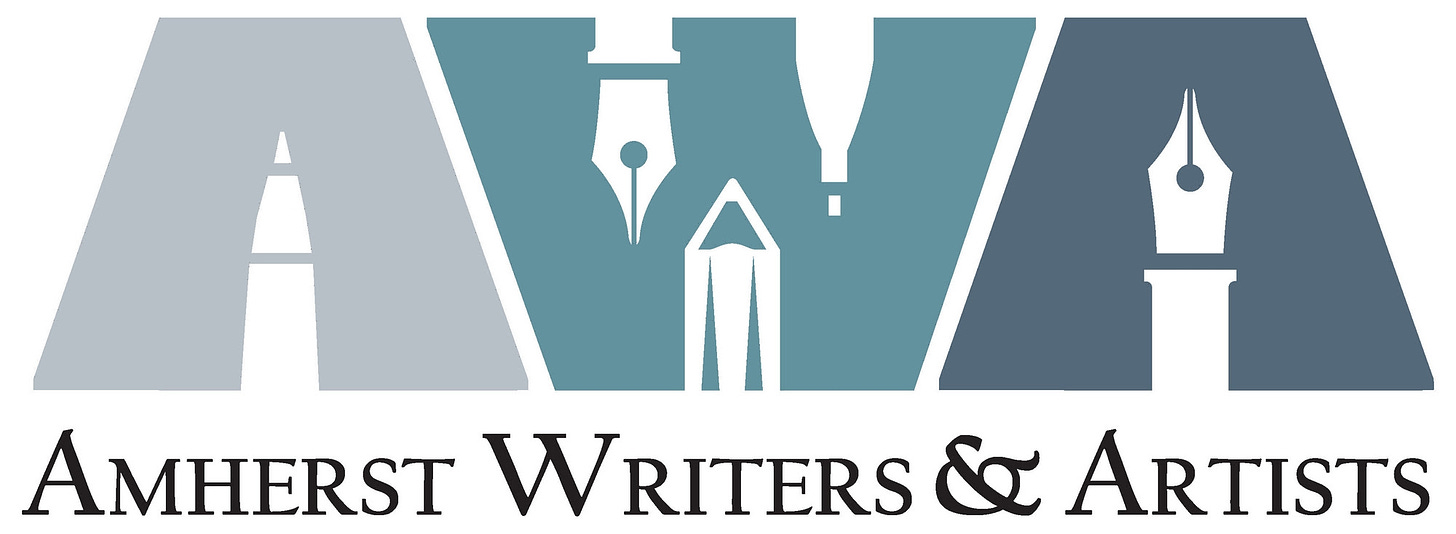Extra! Extra! Read all about it!
Accepting Editorial Suggestions as a Path to Success was published yesterday in the Lit Mag News column, Humor & Opinion. I’m pleased by the reader engagement:
“The best editors are collaborators who care about the piece itself…”“Writers can always keep growing and learning—if they want to. And being edited so well for so long by so many people has made me a better editor myself.”“Editors like to be regarded as someone who is helping the writer, not diminishing their work.”
Here’s the backstory: Five months ago, after I sent a piece about lit submissions to Chill Subs, co-founder Ben Davis replied: “This is a great read & does an excellent job of laying out the path a submission might take before getting published. Always something I like to see.” The post was declined as they’d already received something similar, but he added: “I think
at Lit Mag News might like this.”As it turns out, back in 2012 Becky mentioned my blog in her The Review Review:
“In other news, if you’ve gotten your MFA, are mid-MFA or potentially pre-MFA, you might appreciate Nicole R. Zimmerman’s encouraging and level-headed article, ‘Life After the MFA: Exploring Publication Options.’ ”
So I sent her the piece I’d recently adapted from several (former) blog posts. Becky agreed it was a good fit for Lit Mag News. However — might I be open to developing it a bit further? “As I was reading, I was wondering what the main message was that you wanted to convey to readers...” She’d love to see another draft.
Based on her suggestions, I rewrote the opening and refocused the angle.
“I think we're getting closer,” she replied, still not fully sure what the piece was arguing. “I'm wondering if there might be a stronger way to structure this.”
Originally, I’d mentioned the 9 months (with 8+ rejections) it took for my essay “Crisis” to be accepted for publication by Creative Nonfiction. (Shortlisted among the top 4% of 1,700 contest submissions for the magazine’s Memoir issue, it was ultimately selected for a special issue on the theme Making a Living.) I’d also included:
Hattie Fletcher, the managing editor, was a writer's dream realized. She offered incisive yet sensitive direction, working in collaboration with me to fine-tune my draft. Tucked inside the print issue was a personalized, handwritten note thanking me for the “terrific essay.”
“It seems to me that just about any writer would leap at the chance to work with Hattie and/or someone at a magazine of that caliber,” Becky accurately noted. “So I don't think the reader needs much convincing to say yes to an opportunity like this.”
After another round (“much better”), it was now a bit short, needing some fleshing out.
“The main concern I have with the piece currently is that I am not fully sure what it's trying to communicate… It just needs a bit more of the why.”
I admit, I considered giving up. Figuring out the “why”of a piece is something I often wrestle with in my writing. What’s the reader takeaway? is familiar feedback. I just wasn’t sure if it was worth the time and effort. So I gave it space. Then, ready to pick up my topic again, I told myself if I couldn’t get it right on the third try, I’d let it go.
“Ah, excellent, Nicole, this one will work!” Becky wrote, thanking me for my persistence. “I guess it's a case study of working with an editor until publication.”
And that’s precisely the point I ended up making in the final draft:
“Remember that a ‘sorry, not for us’ isn’t necessarily an end, but it can be a sign that something requires reworking.”
Flash Finalist!
After a flash essay of mine was declined by several publications, editors flagged it as a contest finalist. (Since it's judged anonymously I cannot yet name the piece or the mag.) While it was “not chosen for publication” in Atticus Review and “isn't a fit” for Hippocampus Magazine, Shenandoah “found much to admire.” Subjectivity rules!
“The difference between a flower and a weed is a judgment.” — Unknown (tea bag quote)
Looking for venues seeking flash? Check out these options with upcoming deadlines:
WOW! Women On Writing hosts 2 quarterly contests: 1 for fiction & 1 for nonfiction.
Passengers Journal accepts flash prose submissions (max of 1500 words).
Pigeon Pages seeks fiction and nonfiction (850 words or less) for its Flash Contest, judged by Gina Chung, author of Sea Change. Winner receives $250 + publication.
Sweet: A Literary Confection publishes poetry and CNF and anything in between, including graphic nonfiction (sorry, no fiction) three times a year.
Atticus Review especially likes Flash CNF & Flash Fiction: 800 words or less.
The Good Life Review’s Micro Monday features brief fiction, cnf, and poetry.
Writer Advice seeks flash fiction, flash essay, flash memoir, short-short story, letter, microfiction, or work that blends genres for its Flash Prose Contests.
Writing Workshops
This week marks the end of two more 8-week series of writing workshops attended by a total of 15 wonderful women, most of whom registered for another round in the fall.
A “unique ensemble of writers” is how one participant characterized our group during a closing circle. Others appreciated the insights, inspiration, and compassion offered, and the “atmosphere of safety” that instilled a sense of belonging. Someone who at first felt intimidated by the caliber of writing was warmly welcomed. Another compared the experimentation—supported and encouraged by our writing community—to a dance with different partners, or unexpected steps from a familiar one.
Each 2-hour Zoom session of From Memory or Imagination uses the AWA method, with prompts and positive, reflective group feedback to support our creative practice. The next 8-week series for women & nonbinary writers begins Wednesday, Sept. 20, 3–5 p.m. PT (6–8 p.m. ET). $240. All genres and experience levels are welcome!
For more info, please fill out a Workshop Inquiry Form.
Business Casual
I’ve been working remotely for over a decade, long before the pandemic pivot. I spend a lot of time on-screen so I often need to shift spots, preferring sunlit spaces. Here are a few favorites places I work, write, and read—(The Byline Bible by Susan Shapiro and The Business of Being a Writer by
)—from my standup desk to a sun bench. My comfy tie-dye sweats keep me comfortable & cozy. My wife calls this my Power Suit! Where do you prefer to work? What do you wear?



Stay tuned for another installment of writerly news next week, before I head to Japan!






Loved reading this--and thanks for the mention!
Love it. I subscribe and like what she does. Nice to be appreciated.